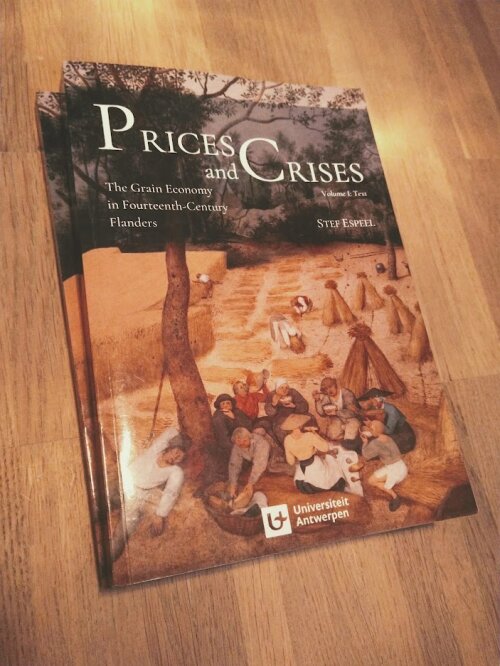Prices and Crises. The Grain Economy in Fourteenth-Century Flanders.

This dissertation focuses on the occurrence of food shocks by investigating both the frequency and intensity of price shocks on the grain market in fourteenth-century Flanders, as well as questioning its origins and consequences. The basis is formed by new price series for grain, which were drawn up using a combination of data from both original source material (accounts and financial records) of large ecclesiastical landlords and other published series for the cities of Bruges, Ghent, Lille and Douai in the county of Flanders and Cambrai just outside it.
The study approaches the price shocks on the grain market along four major axes. The first part investigates the price formation of grain. It mainly tackles the many technical challenges of reconstructing a reliable market price series for contexts where the source material is fragmented. Based on these new price series, the second part looks at the frequency, intensity and duration of price shocks. The long and short-term fluctuations of the grain price as well as the integration between the Flemish cities and in a broader European perspective is addressed. The third part studies the vulnerability of the urban population to price surges and the accompanying food shortages due to the far-reaching market dependency on the one hand. On the other, it questions the link between the mortality crises of the many plague episodes of the fourteenth century and the subsistence crises. Finally, the fourth part of this study focuses on the large landlords and their role as large scale producers and exporters of grain. The organization of their activities on the grain market, the differences between the organization of the agriculture of the regions in which these landlords were embedded and the adaptation of the income and expense strategies of grain by the landlords are key in this last part.
The main concluding points that emerge throughout the dissertation include the unique character and importance of precisely dated prices. This allowed the frequency, intensity of the price peaks, and their influence on the urban population to be accurately studied. Additionally, the importance of large landowners in the production and distribution of grain, as well as the institutional constraints and the importance of the different social agrosystems needs to be stressed.